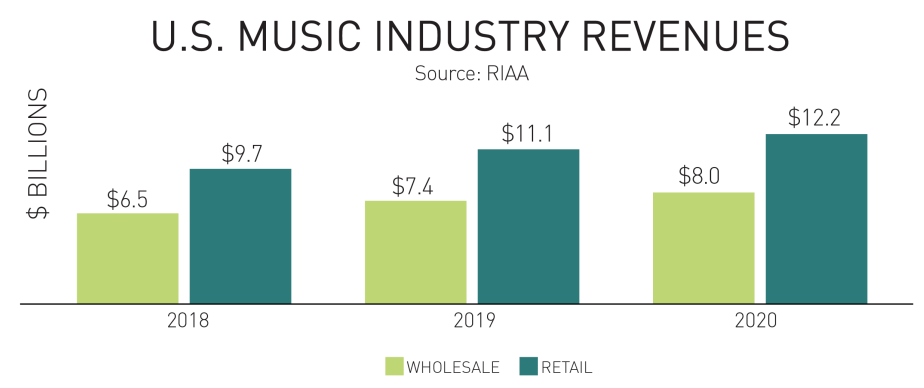COVID can’t kill the music: Music streaming revenues grew to $10 billion+
Image Credit: RIAA
After a difficult year for so many reasons, we do at least have something to smile about looking back at 2020 as music saw immense growth that – if anything – was aided by the pandemic.
The music industry has had a tumultuous year and we can hardly look at the year in retrospect and say it’s been an easy ride for musicians. The live sector has been decimated by the cancelling of gigs and shutting of venues which for many artists provides a primary source of income.
But there is a light at the end of the tunnel, as the Recording Industry Association of America’s (RIAA) have revealed their end of the year report for 2020. It shows us that whilst 2020 was difficult for many reasons, people were connecting with music on a much deeper level, listening to far more than they did in 2019.
Last year was the fifth consecutive year in a row that US music industry revenues grew. And boy, did they grow! Overall estimated retail value saw revenues increase by over $1 billion to $12.2 billion. That’s a 9.2% growth on the estimated retail value of US music in 2019: $11.1 billion.
The majority of these incredible results is thanks to the last decades huge uptake in music streaming, which accounted for 83% of total revenues last year. Particularly in paid streaming subscriptions, which grew a whopping 14.6% in 2020 to account for $7 billion in revenue. In 2020 there were an average of 75.5 million subscribers on paid music services, a huge leap above 60.4 million the year before.
Vinyl also saw a spectacular year as people are connecting with the physical format more than ever before. In fact, for the first time since 1986 vinyl records made more money than CDs in the US. Overall however, vinyl’s growth couldn’t overpower the consistent dropping in CD sales and total physical revenues were down 0.5% to $1.1 billion. Considering CDs plummeted by 23% it’s not particularly a surprise.
RIAA Chairman and CEO, Mitch Glazier wrote: “The headline numbers tell a story of continued, strong growth for streaming reflecting music’s role in the broader online ecosystem as a key engine fueling tech platforms, online services, and apps.”
Glazier also noted the hardships brought by the cancellation of the live industry. He adds: “Most Americans couldn’t be more ready to turn the page from 2020 into a new year as vaccines promise recovery, renewal, and hope. For performing artists and musicians, getting back on stage and reconnecting with audiences and fans simply cannot come too soon.”
